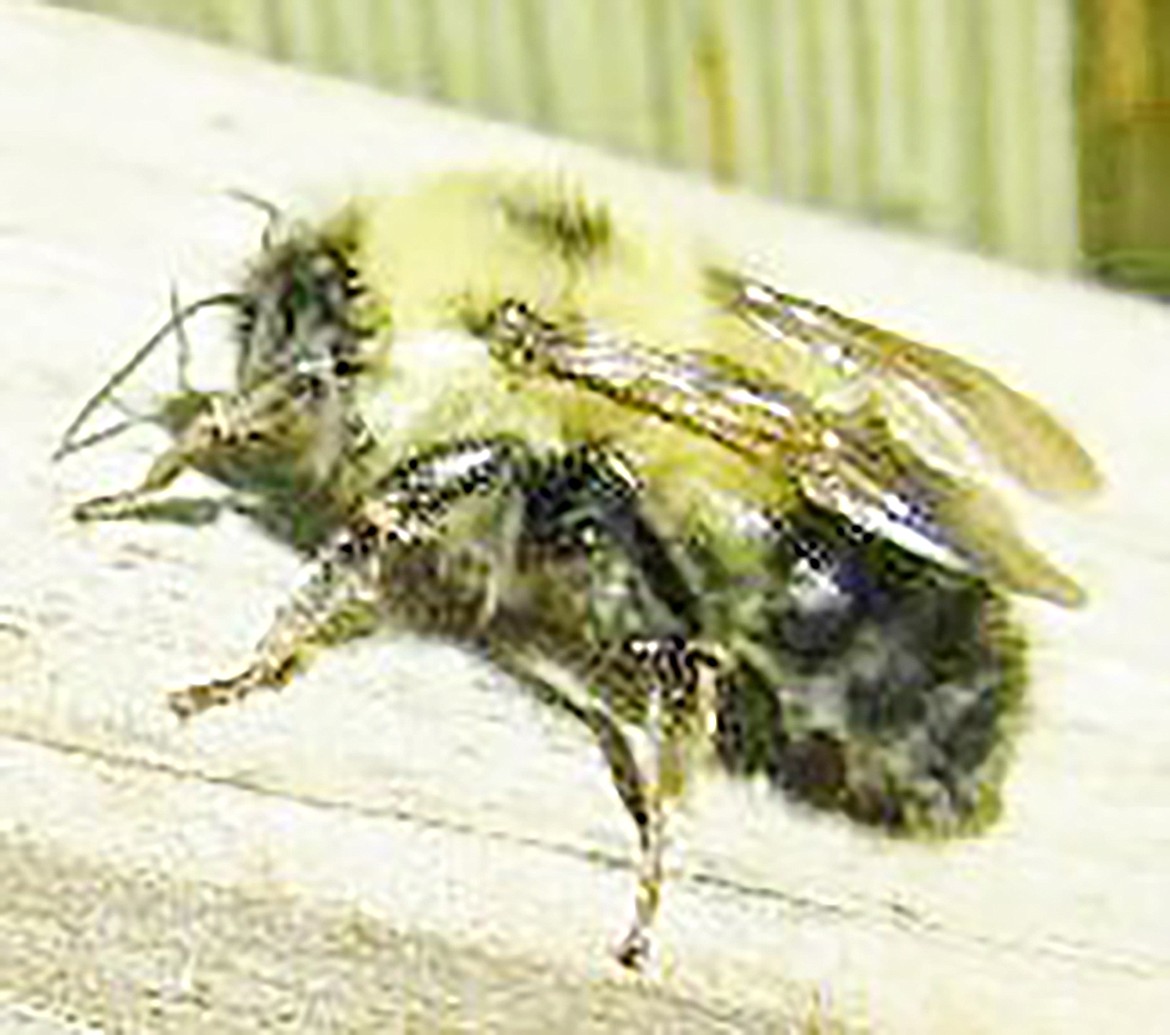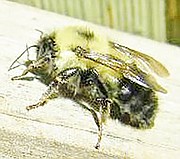Plan now to make a pollinator-friendly garden
Admittedly, it’s a long while before gardening season here in the high country, but I know many folks are making notes on plants, supplies, equipment, etc., and thought maybe I could get off one good tirade to keep you from putting pesticides on your lists.
OK, so I’m sneaky — but it’s for the good of all our landscaping health and safety and especially beneficial for the desperately needed pollinators — namely bees.
One of the ongoing problems is that most folks think any bee look-alike with black-and-yellow (or white) stripes is a yellow jacket or hornet. The fact is that there are many large and small species which fit that description that are valuable — and desperately needed — pollinators, including even the much maligned yellow jackets, hornets and wasps.
There are many small, even tiny, striped yellow jacket look-alikes, along with medium-to large sized ones as well — and if closely observed in a flower, will prove the point. I once closely watched a large, strange black/white striped hornet look-alike in a Peony; it gathered pollen by “wallowing” in the laden stamens, crawling busily around and back-and forth until its legs were covered with the powdery stuff and then flying off with its treasure to a neighboring Peony. It did not have the “pollen pockets” that bumble bees are blessed with — but still carried a goodly load. Simply amazing. Nature is truly wonderful.
Many of the beneficials pay their dues by lurking in flowers feeding on nectar and aphids. I have seen yellow jackets — the meat-eaters — do this, and the thought (shared a few years back) came to me that instead of zapping those pesky stinging pollinators — try feeding them. Put a dish of meat or fish on a stump in an out-of the-way spot and let them go at it. Keep it refilled as with any feeder so they’ll congregate there and not at your barbecue.
I have learned over time that the hover or “sweat” bees (aka pollinators) that look you over and drive you crazy on your deck do NOT sting, and flailing does absolutely no good. As with all bee encounters, slow, determined movement is the key.
My greenhouse once sat on the open end of my front deck and I’ve talked about the year that (big) black hornets built a huge nest on the greenhouse window. What an amazing opportunity it offered. On the inside through the glass, it was just like an ant farm. I could watch their comb-building and other activities and would stand for long periods, mesmerized. Doubtless, they got used to me. Outside, I had to pass it closely several times a day, so decided to “introduce” myself to them. I stood aside and watched them work, quietly doing my own things on the porch — preparing potting soil, planting seedlings, etc., so they could see I was no threat. We interacted peacefully; once when I had to move a couple aside that were close to my activities, I actually gently pushed them away with the side of my hand. They very companionably moved away and continued their own work. I greeted them when I came near — “Hi, guys.” (though no one ever answered) — and never had one threatening encounter.
I am a great believer in communication — I guess that’s why I’m in the business — and I maintain that it is possible with all living creatures; move slowly but with purpose, make no threatening movements, mind your own business — and simply live and let live is the answer in nearly all garden-landscaping encounters. Give it a try, and good luck. We need all the pollinators we can get.
The queen of all the pollinators is, of course, the honey bee. Nearly extinct in many areas — especially large commercial orchards/gardens that stubbornly hang on to the misguided mindset that “kill ‘em all” is the answer — but occasionally I have seen a few of the soft fuzzy-bodied creatures working the lavender and been thrilled and grateful. Did you know they are responsible for pollinating one-third of the global food supply? Think almonds, tomatoes, garlic — among others, and realize, too, that they and other bees pollinate avocados, blueberries, Brussels sprouts, carrots, citrus, cucumbers, melons, squash and many other fruits and veggies. Good reason to take pesticides off the garden list.
Speaking of “fuzzy-bodied” did I ever mention the time I petted a huge bumblebee on a wild rose in my yard? It was so big and adorable I just had to reach out with a careful forefinger and pet it ever so gently. It didn’t move, but made the cutest buzzy sound — I had to laugh out loud. I obviously hadn’t bothered it much, because it continued making the rounds of the roses on the venerable old rosebush. Why not put petting a bumblebee on your “to-do” list for an uplifting garden season?.
I’ve mentioned many times the way Mother Nature manages her charges, including the emergence of the bumblebees at the exact same time the native Lonicera utahensis (Twinflower honeysuckle) blooms. I watch the small, bell-like flowers drooping drastically as a hungry Bombus feeds on their nectar. If you don’t have any on your property, ask at local nurseries where some might be available. By the way, it’s a member of the honeysuckle family, but there’s no resemblance at all between it and the orange-flowered climbing honeysuckle. Many shrubs are wonderful for their beauty, but so much more appreciated when they serve such an important function.
I hope that today’s little “bee compendium” helped each of you to understand the importance of all the pollinators — necessary for garden health and even existence. I’m always available for a phone visit — (9 a.m. to 4 p.m.) — and remember I do NOT have e-mail — notes sent to the Bee site may not get to me for over a week since I work from home (as does nearly everyone now.) My old-fashioned (but faithful) landline number is 208-265-4688. I was recently given an e-mail regarding raccoons ravaging tree-hanging bird feeders — remember ‘coons can climb trees. I hang my bird feeders (in baskets) under the eaves of my porch, out of the weather but easily accessible (but not to the raccoons.)
Valle Novak writes the Country Chef and Weekend Gardener columns for the Daily Bee. She can be reached at bcdailybee@bonnercountydailybee.com. or by phone at 208-265-4688 between the hours of 9 a.m. to 4 p.m.





